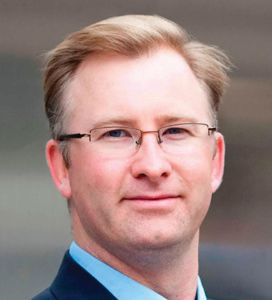Guy and Tamara have been married for nearly 10 years. Tamara was cited as senior management material at the same company where Guy is a key engineer in the product development team. They have a lifestyle that makes them the envy of their friends and coworkers. They have a big house, drive a nice car, always dress stylishly and have the latest gadgets.
However, they struggled with enormous debt. Guy hides his financial stress through drinking and Tamara deals with the anxiety and depression by smoking excessively. Guy was spending more than an hour a day at work trying to figure out where they were going to find the money to cover their bills. Their situation was taking a toll on their relationshipand health, and their productivity and engagement at work had dropped dramatically.
Their company announced a new financial education program and Guy and Tamara enrolled on the spot.
The program included a series of seminars, online tools and workbooks to help them get their financial affairs in order. The first session was on goal setting and cash flow planning. It was an eye-opener for Guy and Tamara who really didn’t know where all their money was going. They were shocked to discover that they were spending $1,100 more than they brought in every month. No wonder they could never get ahead and only continued to accumulate debt.
Over the next six months they learned how to destroy their debt and save interest, about various types of insurance and investments, how best to use their company pension and benefits, and about tax, retirement and estate planning.
As they used the tools, Guy and Tamara slowly got their financial affairs in order. Tamara was smoking much less and Guy had reduced his drinking to weekends only. This saved them even more money. No longer did Guy come in to work late and hungover and Tamara found a new energy and drive that helped her earn a promotion.
Although they still have other emotional and health issues to work on, regaining control of their finances has been a major part of improving their overall wellness. This has resulted in a higher level of engagement, productivity, and organizational commitment from both of them at work.
A NEW WAY TO THINK ABOUT EMPLOYEE WELLNESS.
“If sitting is the new smoking, then financial stress is the new silent killer.”
Financial education is the lynchpin to a successful wellness program. More than 60 per cent of people cite personal finances as their number one stress and this stress can’t be alleviated on a treadmill. Many are already on a financial treadmill, living paycheque to paycheque, never saving enough, never moving forward.
If sitting is the new smoking, and nutrition and exercise are now key parts of employee wellness programs, then financial stress is the new silent killer – the body’s response to the constant stress generated by financial issues slowly becomes disease-inducing. Empowering your employees to take control of their finances will have the single-greatest impact on the success of your wellness programs.
NOT ALL BENEFITS ARE CREATED EQUAL
Understanding and addressing the issues that employees are facing will help you design and provide more-effective benefits. Employees are looking for flexible and more relevant benefits, beyond simply more money, they want benefits that help them to have a better quality of life. A financial education program can help more than the two-thirds of employees who say they are not in control of their finances.
This education needs to be about more than pensions and benefits. According to the experts at the 2012 Financial Education in the Workplace Roundtable held in Toronto, financial education needs to start with the basics: setting goals, building a budget, understanding insurance, debt management, tax planning, investing 101, retirement and estate planning.
Employee financial education can’t be the sole the component of a successful wellness program, but it must be part of the solution. By giving employees the ability to take control of their finances, you will get healthier employees who want to work for you.
To learn more about how financial education can help your business, download a series of free whitepapers, guides and infographics at www.employeefinancialeducation.ca/HRD
 Frank Wiginton is the CEO of the Employee Financial Education Division and author of the book How To Eat An Elephant: Achieving Financial Success One Bite at a Time. [email protected] @1frankthought
Frank Wiginton is the CEO of the Employee Financial Education Division and author of the book How To Eat An Elephant: Achieving Financial Success One Bite at a Time. [email protected] @1frankthought

 Frank Wiginton is the CEO of the Employee Financial Education Division and author of the book How To Eat An Elephant: Achieving Financial Success One Bite at a Time. [email protected] @1frankthought
Frank Wiginton is the CEO of the Employee Financial Education Division and author of the book How To Eat An Elephant: Achieving Financial Success One Bite at a Time. [email protected] @1frankthought